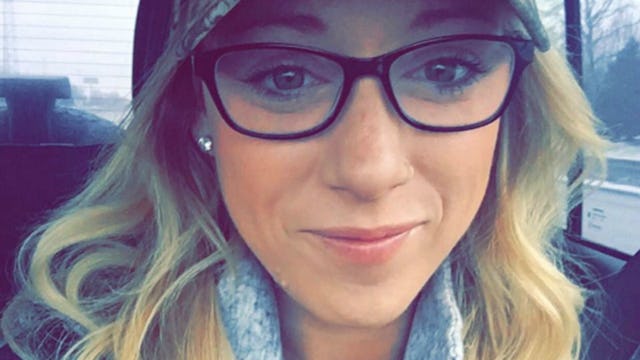A Mom's Nightmare Come True: My Teenager, The Drug Addict

I was the PTO mom, the carpool mom, the Brownie leader. We ate family dinners at the table, taught our children manners, and took family vacations. My husband and I were blessed to have very good jobs. My daughter Brittany, the beautiful girl in the photo, was the honor roll student, the volunteer at the city parks and recreation department, and loved playing sports.
Then our entire lives changed.
Growing up, I had skewed images of what a heroin addict looked like. I envisioned them sitting in an alley, a criminal or a stereotypical hippie from the ’60s and ’70s, someone who grew up in a bad home. I had preconceived notions that you had to stay away from them — that they were bad people.
Never once did I envision my daughter.
I am very ashamed of my thoughts now. I never really had a “real” exposure to addiction. What I saw was what was depicted in the movies and on TV. We lived in the suburbs where “that just didn’t happen around here.”
Boy, was I wrong.
Now addiction has a multitude of faces. It’s the high school quarterback who became injured in a game, was prescribed Vicodin, and became addicted.
It’s the mom down the street from you, driving her minivan to CVS to pick up more pills, even though she just finished a 30-day supply in 10 days.
It’s the babysitter who went to a party and didn’t drink, as mom and dad properly told her about the dangers of it. So she took a few pills instead.
It’s the heroic Marine who fought in the Gulf War, who is now fighting PTSD and addiction.
It’s the corporate executive who was prescribed Xanax for stress.
It’s the senior citizen who had hip surgery, and within weeks, unknowingly grew dependent on prescription narcotics.
It’s my daughter.
This is happening in our homes, our communities, our schools. No one is immune. It affects all classes, races, ages, and professions.
Get your head out of the sand. If you feel like “it would never happen to you or anyone in your circle,” take a look around. It’s happening. You may not even know it. Most addicts become isolated out of fear and lost in their addiction, finding it hard to reach out.
It’s time to show some compassion.
Recently, as I was walking to my car, I noticed a homeless man hunched over. Instead of walking by him, I stopped and asked him if I could sit down next to him. We talked for a good hour. Turns out, he was a Marine who was injured in combat, became addicted to Vicodin, and didn’t know how to stop but wanted to so badly. He swore he would never do heroin — that’s what junkies do, after all.
But then his pills got too expensive, and he became physically ill as a result of withdrawal. He ended up turning to heroin — just to feel normal again. My heart broke for him. I gave him my card and said to call me if he was ever ready for help. He called two days later. He is currently at a six-month treatment facility, fighting for recovery, and has renewed hope in life.
As a community, it’s time to come together. These are not “junkies on the corner” — these are our friends, our neighbors, your grandfather, men who fought for our country.
These are our children.
Please don’t make assumptions about people. The next time you are walking and see someone who is homeless, don’t avert your eyes and walk past. Stop and reach out your hand. It was my daughter sitting there once, lost in her addiction, ashamed and feeling hopeless.
You may just save a life.
If you or someone you love is struggling with addiction, there are resources that can help you.
If you’d like to reach out to Katie, you can do so here.
This article was originally published on